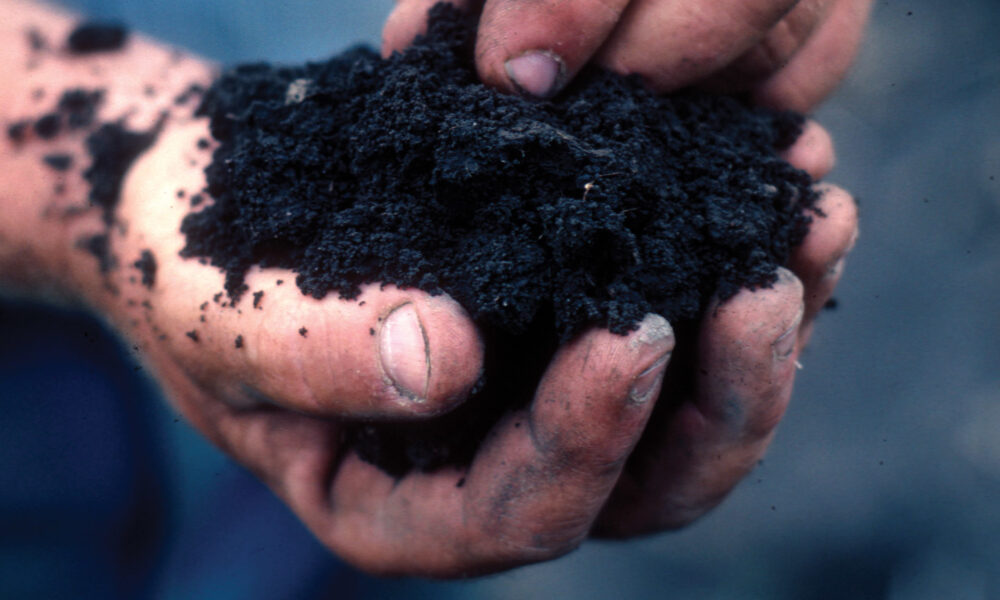The Agriculture Resilience Act (ARA) was reintroduced today in Congress by Representative Chellie Pingree (D-Maine). The ARA is perhaps the most comprehensive and concise legislation (mind you, it still runs a good number of pages!) to integrate food and farm policy in a way that addresses climate change and helps farmers reduce their carbon emissions. Through dramatically increased investments in research and science-based initiatives, the ARA aims to improve the health of long-neglected farm soils and their ability to withstand extreme weather like droughts and floods, improve water quality, and capture carbon.
During its previous introduction, the ARA was widely supported by science, farm, and climate groups and considered a landmark piece of legislation in mitigating climate emissions from agriculture.
Solutions across systems, not in silos
The ARA improves and expands many existing voluntary US Department of Agriculture (USDA) programs and creates new grant programs to support some key building blocks of the US farming system. One of the major strengths of this bill lies in transforming the entire agricultural system to become a part of the climate solution. Along those lines, it adopts a systems approach in tackling the climate crisis by investing in and expanding a vast set of interconnected programs that includes supporting improved agricultural practices on crop and livestock operations, expanding renewable energy use on farms across the nation, and helping to curb food waste.
As a scientist, there are many transformational pieces in the ARA that are exciting to me, ranging from increased investment in climate-focused agriculture research to sustainable nutrition science research. But those that stand out the most are the first-ever authorizations of the USDA Climate Hubs and the Long-term Agroecosystem Research (LTAR) network, expansion of agroforestry initiatives, expansion of the USDA’s conservation programs, and grants to states and Tribal governments interested in implementing soil health management programs. The appeal of these programs for me is that they anchor the ARA’s targets in soil health and make it clear that restoring and maintaining soil health is an important (and mandatory) part of climate mitigation efforts.
Why is soil health important?
In the last several decades farm policy has incentivized industrial agricultural practices dominated by commodity crops (primarily corn and soybeans) grown with large amounts of chemical fertilizers and pesticides, with fields left barren between growing seasons. This practice degrades soil, leaving it less like a sponge and more like concrete. Degraded and unprotected soil is prone to erosion and vulnerable to being washed or blown away during floods and droughts. Soil health management practices can increase water-holding capacity, create carbon sinks that store atmospheric carbon, and improve crops’ ability to recycle nutrients like nitrogen and phosphorus, reducing reliance on chemical fertilizers while sustaining the nation’s agricultural capacity.
Agriculture needs to be a part of the climate solution, given that it is responsible for about 11 percent of heat-trapping carbon emissions in the United States. By improving soil health and increasing soil organic matter, farmers and ranchers can grow healthy crops and keep carbon in the ground instead of the atmosphere.
The ARA’s soil health goals
The ARA makes significant investments in long-term solutions for building soil health and expands funding for science-based, time-tested USDA programs including the Conservation Stewardship Program (CSP) and Environmental Quality Incentives Program (EQIP). These programs have typically been oversubscribed and underfunded. Research has shown that the return on investment in conservation programs is significant: the Conservation Reserve Program within the CSP, for example, returns almost four dollars for every dollar invested due to the practices it incentivizes and its holistic systems approach. Further, the ARA sets aside technical assistance funding that prioritizes historically underserved producers and farmers, enabling them to implement practices that improve soil health and environmental quality.
The ARA sets three specific soil health goals for the United States to achieve by 2040:
- Increase total carbon stocks in the soil by 0.4 percent annually
- Expand adoption of soil health practices that could restore at least half the carbon that has been lost from soils
- Ensure at least 75 percent of cropland maintains cover crops year-round—a practice that has been shown to protect soils
Another exciting aspect of the ARA is the creation of at least three new agroforestry centers, authorized with $25 million in funding. Agroforestry refers to practices in which trees and shrubs are integrated into crop and animal farming systems. The ARA will also create new USDA grants for state and Tribal governments to ensure that funding for projects that improve soil health is available and accessible to underserved producers.
The climate and conservation provisions within the ARA equip farmers and ranchers to increase the resilience of their systems in ways that carbon markets do not address, making the ARA much more robust and science-backed than carbon markets. Farmers who are already engaged in highly diverse and perennial agricultural systems will likely be undervalued by, and ineligible for payments from, carbon markets. However, these innovative producers may often be eligible for participation in federal conservation programs like the Conservation Stewardship Program, which rewards farmers for measures they have already undertaken. The ARA, therefore, will increase support for the agricultural early adopters whom carbon markets will likely neglect.
How can you support the ARA and a transformational food and farm bill?
I encourage you to read my colleague Dr. Alice Reznickova’s companion blog post on how the ARA would prioritize research at the intersection of climate, food production, and nutrition. Overall, it provides a great road map for transforming and safeguarding our food and agricultural system. As Congress begins deliberations on the upcoming food and farm bill, I encourage you to reach out to your member of Congress and ask them to cosponsor the ARA as a part of the 2023 farm bill package.

